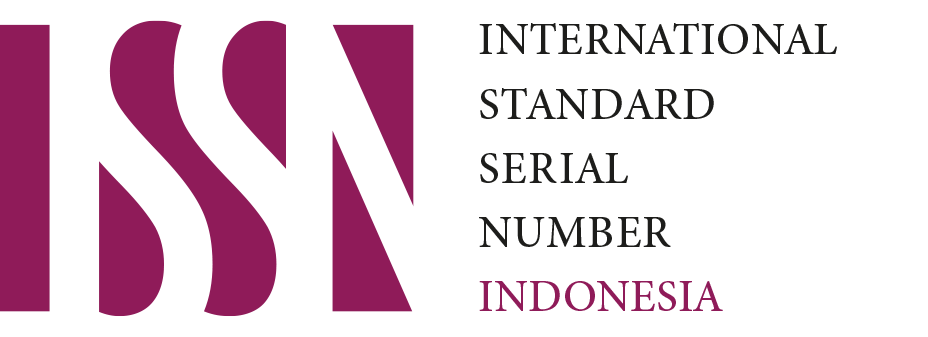Hubungan Karakteristik Demografi Terhadap Pengetahuan SIBAT Di Bantaran Sungai Bengawan Solo
Abstract
ABSTRACT
Background: Climate change in Indonesia is strongly influenced by 3 basic climate patterns: monsoon, equatorial and local climate systems which cause dramatic differences in rainfall patterns, tending to give rise to a high potential for various types of hydrometeorological disasters, such as floods, flash floods, droughts, weather extreme, extreme waves. The community-based early warning system for flood disaster preparedness (SIBAT) is one of the means for preventing flood disasters.The aim of this research is to describeThe relationship between the characteristics of sibat cadres and knowledge about community-based early warning system strategies for flood disaster preparedness (sibat) on the banks of the Bengawan Solo River, Blora Regency. Research methods This is a quantitative approachcross sectional with a total sample of 110 SIBAT cadres selected using the Slovin method. Data was collected using a questionnaire sheet, then analyzed usingChi Square. The research results show that from3 The independent variable is significantly related to the dependent variable, the age variable with pvalue 0.013, gender variable with pvalue 0.071, education level variable with pvalue 0.013. which means that each variable has a strong relationship with the dependent variable, namely with knowledge about the Community-based Disaster Information System on the banks of the Bengawan Solo River.
Keywords: SIBAT cadres, disaster preparedness, floods
Full Text:
PDFReferences
Amri, M.R. et al. (2016) RISIKO BENCANA INDONESIA. Diedit oleh R. Jati dan M.R. Amri. Jakarta.
Ashraf, M.A. dan Azad, M.A.K. (2015) “Gender Issues in Disaster: Understanding the Relationships of Vulnerability, Preparedness and Capacity,” Environment and Ecology Research, 3(5).
BNPB (2012) Pedoman Sistem Peringatan Dini Berbasis Masyarakat. Badan Nasional Penanggulangan Bencana.
C, V.M.C. et al. (2018) “The Role of Gender in Preparedness and Response Behaviors towards Flood Risk in Serbia,” Int. J. Environ. Res. Public Health, 15(12).
Ibrahim, K. et al. (2020) “Pelatihan dan Simulasi Penanggulangan Bencana Bagi Masyarakat,” Media Karya Kesehatan, 3(1).
Julianti, R. dan Saragih, K.M. (2020) Pengembangan Asuhan Kebidanan dalam menghadapi revolusi industri 4.0. Jakarta: TIM.
Khorram-Manesh, A. (2017) “Youth Are Our Future Assets in Emergency and Disaster Management,” Bull. Emerg. trauma, 5.
Martono, Ferry, E. dan Kamaruddin, N. (2020) “Penguatan Desa Tangguh Bencana melalui Optimalisasi Pemuda pada Penanganan Triase Kuning Menggunakan Metode Andragogi Pra Bencana,” Media Karya Kesehatan, 3(1).
N, A. et al. (2017) “Health impact of chennai floods 2015: Observations in a medical relief camp,” Int J Health Syst Disaster Manage, 5(2), hal. 46–48. doi:10.4103/ijhsdm.ijhsdm_5_17.
Notoatmodjo, S. (2012) Promosi Kesehatan & Ilmu Perilaku. Jakarta: Rieneka Cipto.
Rahayuningsih, N. dan Margiana, W. (2023) “Posyandu, Hubungan Tingkat Pengetahuan Kader Posyandu, Dengan Keaktifan Kader Dalam Kegiatan Kecamatan, Bayi Balita Di Desa Kebarongan Kemranjen,” NersMid Jurnal Keperawatan dan Kebidanan, 6(1). doi:https://doi.org/10.55173/nersmid.v6i1.149.
(https://twitter.com/BPBDblora/status/784345820099260416
DOI: https://doi.org/10.31983/j-sikep.v5i1.11060
Article Metrics
Refbacks
- There are currently no refbacks.
Jurnal Studi Keperawatan (e-ISSN: 2722-9289), is published by Keperawatan Blora, Politeknik Kesehatan Kemenkes Semarang, Jl. Gatot Subroto No.119, Kajangansawan, Sonorejo, Kec. Blora, Kabupaten Blora, Jawa Tengah 58213















